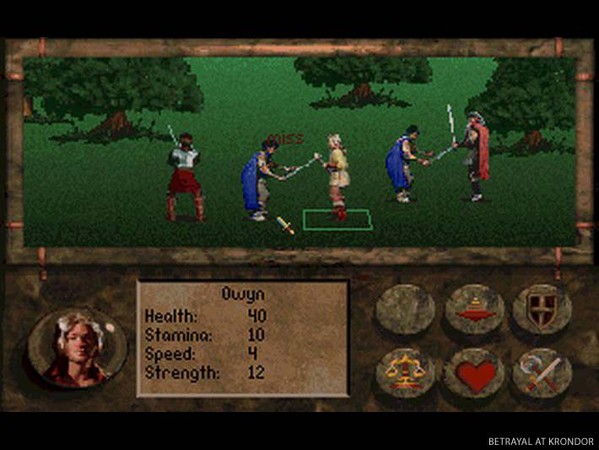

In Krondor, a lot of actors and monsters were digitised, and battles were fought in what was then, by the standards of the time, extremely spectacular 3-dimensional spaces. The combat system was the traditional round-robin battle, but it was made much more spectacular than in SSI RPGs, where all the battles took place between tiny little drawn tiles in rather undemanding locations. Later, however, through much practice (and torturing his friends), he learned to handle the instrument, and so we were able to earn money by having Owyn sing in pubs. In addition to the traditional skills, one character (Owyn, the wizard) could also play the lute, but at first only in a very dog-eared way, ‘bringing tears to the eyes of his companions. So if you fought all the time you became a pro at it, if you preferred the bow you honed your archery skills, if you did a lot of magic you became a master of magic, but you could also improve at things like sharpening sword blades, repairing armour, sneaking around or picking locks.

It was a great innovation (for some reason it has not been used in other role-playing games) that the characters improved at what they practised a lot. Of course, Krondor is still a role-playing game: here, too, the attributes granted by the various stats (melee, archery, magic, false key, etc.) play an important role, and these are constantly evolving through battle and practice. In addition, fans of the Feist books will have enjoyed being able to control their favourites such as Jimmy the Hand, Pug, Sir Locklear and other heroes of the Mage and Riftwar Saga.

In principle, this would reduce the player’s creativity, as they would not have to be involved in shaping the character, but it made the story much more enjoyable by allowing them to control the characters of a real novel. At each major event, we were treated to a lengthy but very demanding and enjoyable passage of text.Īnother big innovation compared to traditional role-playing games was that while in those games the player had to generate two characters, in Krondor we started with predefined characters. The story is not only present in the introductory chapters, but also in almost every main and side quest. Although there have been adventure games based mainly on novels by real writers (450 Fahrenheit, Ringworld), there has never been such an attempt to combine the novel genre with computer games. “Our goal in making Betrayal,” Feist said in an interview, “was to make a truly interactive novel where the player decides how the characters act.” This novel feel was further enhanced by the game’s creators adding a ‘bookmark’ feature, which allowed you to hang up the book at any time, meaning you could continue from the same place when you left the game. But true fans like me will not only read the author’s core works set in Midkemia, The Magician and its sequels, but also the novel versions based on the game… The vast area to cover and the complex and well-developed combat and magic system made even those who had never read a Feist novel fall in love with the world of Krondor. Feist, Betrayal, published in 1993, is a nine-chapter classic fantasy story written in elegant English that is the game’s greatest strength.


 0 kommentar(er)
0 kommentar(er)
